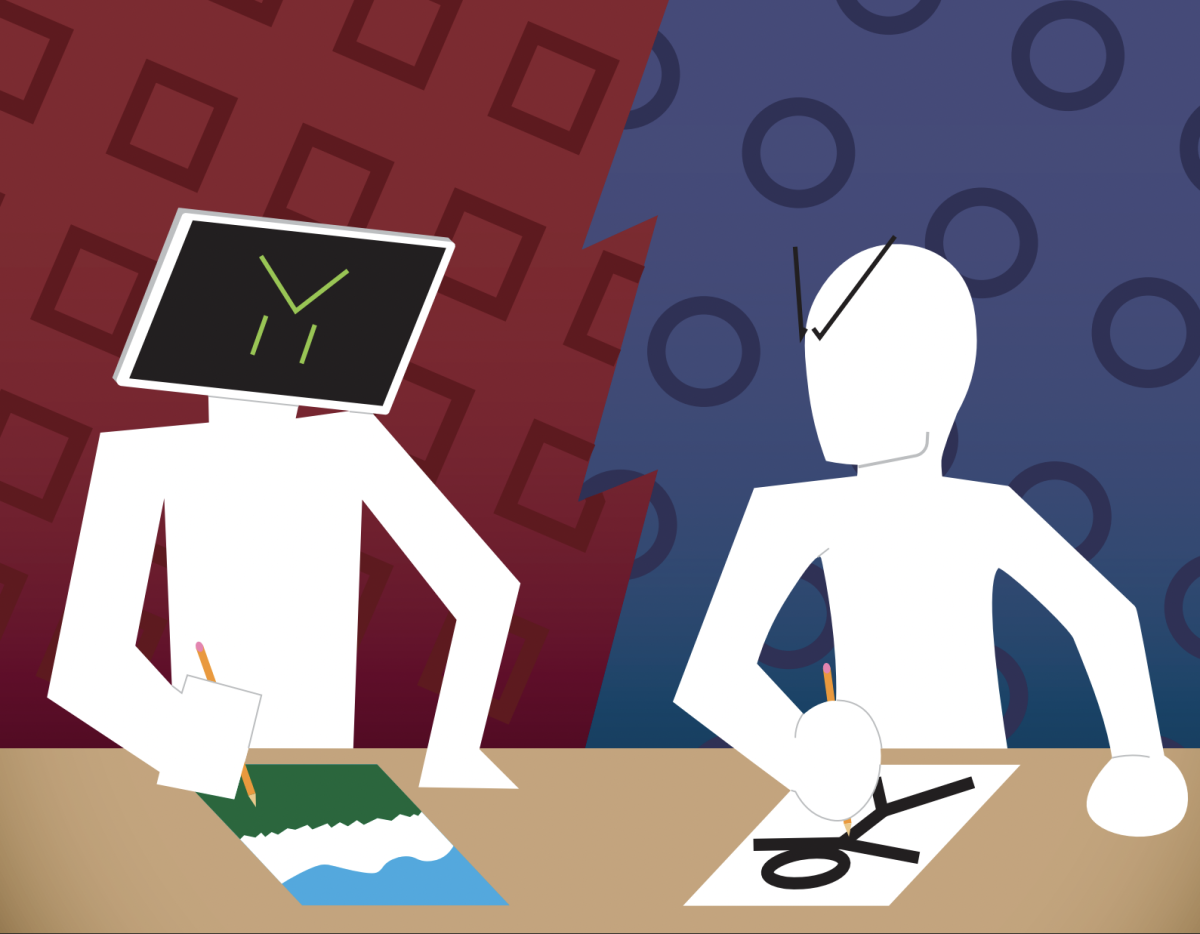Modern day kids are developing at a different rate than past generations of children. With the increase in the use of phones and media, kids now acquire phones at an earlier age, whereby they are exposed to more grown-up products, such as skin care. New technology and apps that appeal to younger populations (TikTok and YouTube Kids) disrupt child brain development. With the addition of newer, more unrealistic beauty standards from social media and pranks or funny videos, the norm of the world is warped in the minds of kids. With their brains still developing, a more unrealistic view of the world is fostered within them.
Trends are a huge part of modern popular culture that lead people to change part of their lives to fit into this media-driven idea. Sophomore Eva Rodriguez says, “I have heard and seen the 10-year-old ‘get ready with me’ videos.” Initially these videos were of adults posting their morning routines and kids tried to mimic them by using unrealistic skin care routines and expensive clothing. Trends such as Drunk Elephant products lead kids who are not expected to have those products to go into Sephora to try to mimic these skin care routines with samples. Kids destroy and overuse samples in stores, causing workers to have to clean up after they remove some samples. Senior Calvin Rodrigue agrees, as he says, “It scares me. I do not see younger kids participating online, but I know several younger kids in-person who have adopted mannerisms from these trends.” Junior Advika Balaji adds that it “negatively affects youth, mostly kids who come into social media at young ages and are pressured into following trends that are unhealthy and inappropriate for them.” With the changing of children’s mannerisms, older and more “formal” manners are lost in generations. Parents can attempt to fix these in their child’s life but with school other peers can pressure into new norms.
With the use of more cosmetic brands and promotion on Instagram and TikTok, kids compare themselves to adults and other children who use makeup from videos they see. Rodriguez adds, “In a way it does lead to higher expectations that may be affecting other people negatively.” With a rising unrealistic beauty standard in America promotion of these products are pumped out as mass advertising is upheld. Freshman Ellie Sun adds, “It will only intensify low self-esteem and insecurities because these concepts are being introduced before they even reach adolescence. Even if makeup or skincare products are harmless physically, I think the mental impact will make adolescence a lot harder to live through.” With self-esteem decreased, depression rate will also increase, as kids will feel a sense of hopelessness as they cannot keep up with the expectations and unrealistic ideas of others. But Rodrigue thinks that “it is fine, since they are just learning skills earlier that they would be learning anyways.” Only because the online world is filled with misinformation can kids mature differently, and if kids are not watching these informational videos, their brains are rotting from the memes and “funny videos” that they watch.
Society overall sees detriments on child development. With the rise of these trends in popular culture through media, we can see a more modern touch on everything. But Rodriguez focuses on the good side, as she believes social media “helps because there are certain things on social media that actually are bringing awareness to our world.” With news that is not spread people become uneducated from what is going on in the world. But posts and people spreading awareness on these topics other than just makeup and trends can positively impact children’s critical thinking and knowledge. Rodriguez then adds that misinformation on social media is more common “because it is easier to misread a situation which can lead to larger conflict.” Posting new content is what influencers look for and if they do not verify what they are posting, it can lead to propaganda, even though it may be by accident. Also, with kids looking up to influencers, they will listen more to what they say and mimic their mannerisms. Lots of YouTubers for kids now do challenges or prank videos. Although these videos are very entertaining, some YouTubers use a lot of jokes about people or make light of events that happen that are more serious. Kids then will take the ideas they see online and try them in real life. This is all because they are developing; they cannot help but just try and fit in with society. The problem is that the internet is raising kids instead of siblings or parents causing kids to get more out of touch with reality. Also, addiction to screens is high in kids as disconnecting from the world becomes more normal and they start to rely more on this entertainment form to escape from responsibility or real life.
Overall, media apps should put stricter restrictions on content that appeals to older generations and influencers should think about how kids will interpret their videos. Children’s brains are being messed with in the worst ways and without proper nurturing, will not regain real-life consciousness.






